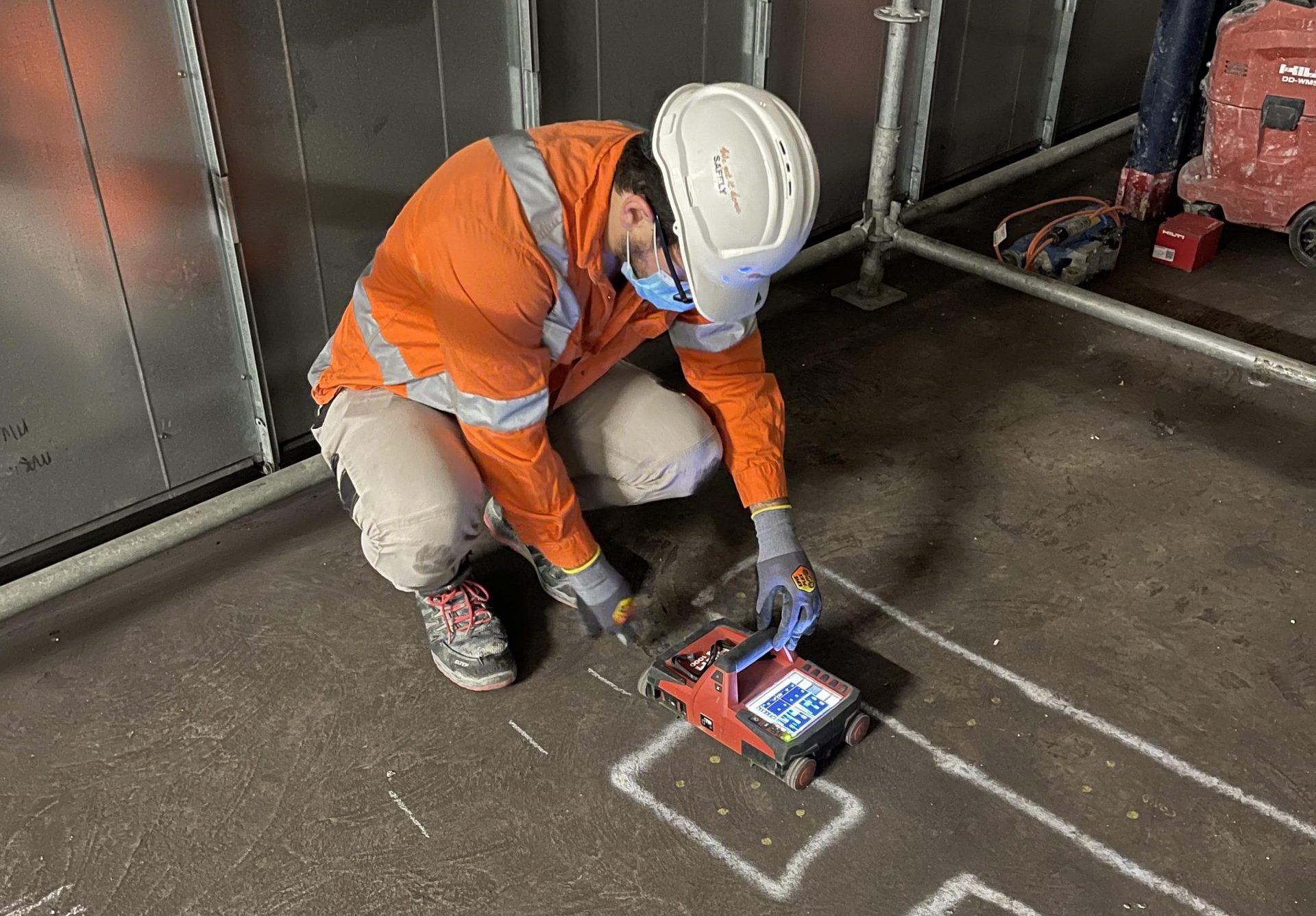Reveal the Transformative Power of Concrete Scanning in Making Best Use Of Performance and Safety
Concrete scanning has actually emerged as an essential device in the building industry, using unrivaled advantages in improving task efficiency and ensuring safety and security standards. By making use of advanced modern technology, concrete scanning enables specialists to see beyond the surface, discovering covert intricacies that could affect the architectural integrity of a building. The transformative power of concrete scanning lies in its capability to give real-time data and in-depth understandings, changing just how projects are prepared and executed. As we look into the ins and outs of this innovative technique, a world of possibilities opens up, showcasing a new age of building methods that focus on accuracy and protection.
Importance of Concrete Scanning
Ensuring the architectural honesty and security of construction projects starts with the important step of performing comprehensive concrete scanning. Concrete scanning is a non-destructive method made use of to discover and map subsurface aspects within concrete structures. This procedure is important in recognizing possible threats, such as rebar, post-tension cords, and avenues, that may be hidden within the concrete. By using advanced modern technologies like ground-penetrating radar (GPR) and electro-magnetic induction, building and construction teams can properly find these elements without creating any damages to the structure.
Furthermore, concrete scanning aids in optimizing task timelines and spending plan by staying clear of unanticipated prices and delays that may arise due to unforeseen blockages within the concrete. Ultimately, investing in comprehensive concrete scanning is a proactive approach that boosts both effectiveness and safety and security in building and construction jobs.
How Concrete Scanning Works
Concrete scanning operates as a vital device in building projects by using sophisticated innovations to find and map subsurface aspects without causing architectural damages. Ground Penetrating Radar (GPR) and Electromagnetic Induction (EMI) are two key techniques used in concrete scanning. GPR jobs by emitting high-frequency radar pulses right into the surface area, which recuperate when they encounter subsurface things or spaces. The time considered the signal to return suggests the deepness and place of the things. EMI, on the other hand, uses electro-magnetic fields to identify variations in material compositions, such as recognizing rebar or conduits within concrete frameworks.
Throughout the scanning procedure, the information accumulated is analyzed in real-time, permitting immediate recognition of possible hazards or obstacles below the surface area. By employing these sophisticated innovations, concrete scanning dramatically lowers the risk of expensive damages and injuries on building sites.
Benefits of Concrete Scanning
One of the key benefits of concrete scanning is the capacity to discover and locate ingrained items such as rebar, post-tension cables, and avenues accurately. Concrete scanning assists in planning and designing helpful site a lot find more information more effectively, as it gives accurate info regarding the location and depth of architectural components.

Instance Research Studies: Concrete Scanning Success

In one more instance, a construction company used 3D concrete scanning to examine the condition old concrete frameworks in a historic structure. The in-depth scans provided useful insights right into the extent of degeneration and helped prioritize maintenance initiatives properly. By proactively addressing areas of issue determined click reference via scanning, the firm was able to extend the lifespan of the framework and make certain occupant safety.
These situation research studies highlight the transformative power of concrete scanning in boosting efficiency, precision, and safety in building and construction jobs.
Applying Concrete Scanning in Projects
Carrying out sophisticated scanning technologies during construction projects has become increasingly vital for improving precision and security. By integrating concrete scanning into project planning and implementation, building and construction teams can determine prospective risks, such as rebar or post-tension cable televisions, hidden within concrete frameworks. This aggressive strategy decreases the threat of mishaps, delays, and costly rework, inevitably causing much more effective task timelines and budgets.
To apply concrete scanning properly, project managers should team up carefully with skilled scanning professionals to establish one of the most appropriate scanning techniques for the details job requirements. Involving scanning specialists from the beginning of a task allows the group to produce detailed scanning plans that resolve crucial areas of worry and guarantee complete information collection.
Furthermore, including concrete scanning into routine project workflows can simplify decision-making procedures, as real-time check data gives instant understandings right into the problem of concrete frameworks - Concrete Scanning. This data-driven technique facilitates notified analytic and enables groups to make modifications promptly, promoting a society of efficiency and security throughout the task lifecycle

Final Thought
To conclude, concrete scanning plays a vital duty in improving performance and safety in building jobs. By making use of innovative technology to map and detect out underlying structures within concrete, this process assists to avoid pricey blunders, make sure structural stability, and minimize dangers on site. With the capability to reveal concealed components and give exact information, concrete scanning confirms to be an important device for enhancing job results and making the most of overall success.
Concrete scanning is a non-destructive approach used to discover and map subsurface aspects within concrete structures. Additionally, concrete scanning helps in optimizing project timelines and budget plan by preventing unforeseen costs and delays that might develop due to unpredicted obstructions within the concrete. One remarkable instance research includes a large-scale renovation job where concrete scanning played a crucial duty in making sure job success.In another instance, a building business utilized 3D concrete scanning to assess the problem of aging concrete structures in a historical building. By integrating concrete scanning into task planning and implementation, building and construction groups can identify possible risks, such as rebar or post-tension cables, concealed within concrete structures.